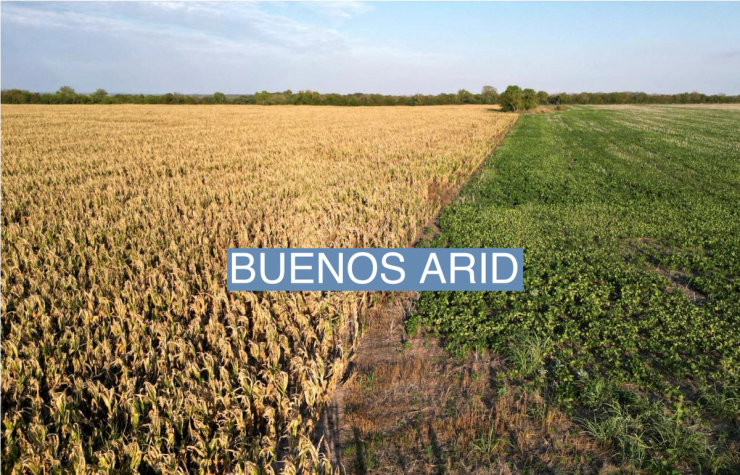The News
A historic drought could cost Argentina more than $20 billion in lost agricultural production this year.
Argentina is the world’s leading exporter of soybean oil and the third-biggest exporter of corn.
In this article:
Know More
Argentina has been hit by its worst drought in 60 years, with almost half the nation affected, La Nación reported.
During January, more than 1.3 million square kilometers — an area roughly twice as big as Texas— was experiencing drought, according to the Drought Information System for Southern South America (SISSA). In the worst affected region — Santa Fe, just northwest from Buenos Aires — only 20% of the land surface wasn’t dry.
Reduced agricultural output — that made up 7% of Argentina’s GDP in 2021, according to the World Bank — compounds the pressure on the country’s economy, which has been blighted by soaring inflation and low growth.
Record inflation — 99% in January — has also affected producers, increasing soy production costs by 38%, La Nación said, as the price of fertilizers shot-up by 116% in the last year. The latest estimates suggest Argentina will produce almost 40% less soy than initially forecast.
Hundreds of food producers protested last month as they sought assistance and reduced taxes to limit the impact of the dry spell. A counter-protest, organized by a pro-government movement, accused food producers of hoarding grain, which, if exported, could generate badly-needed foreign currency flows into Argentina. Argentina’s President Alberto Fernandez accused the agriculture sector of attempting to devalue the peso.
Step Back
Although the drought in central South America has worsened this year, the region has suffered from a rain deficit for each of the past three years.
The lack of rain is at least partly attributed to the high-occurrence of La Niña, a cold-weather pattern.
Argentina received only 44% of average precipitation in the last four months of 2022.
Before drought-related losses were considered, Argentina’s economy was forecast to grow by just 0.5% in 2023, according to the OECD.
The View From Uruguay
Uruguay, which sits just across the Río de la Plata from Buenos Aires, is also suffering from the historic drought.
The country, where more than 60% of total exports are agriculture-based products, declared a state of emergency in October — which was extended until the end of April — as it seeks to combat the lack of irrigation.
According to World Weather Attribution, more than 75,000 people are suffering from lack of access to potable water. Access to water for crops and livestock is also limited.


